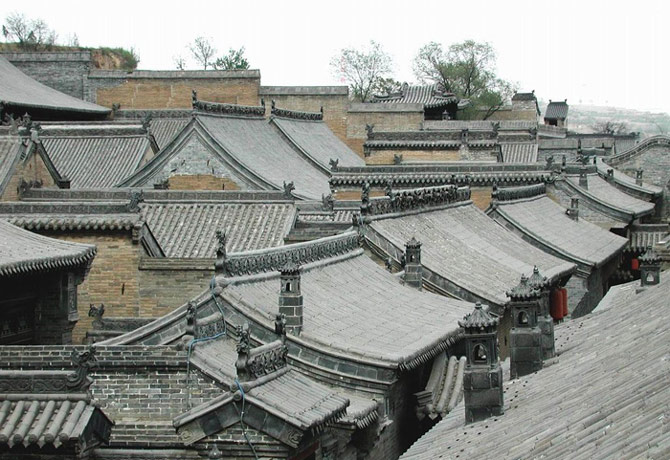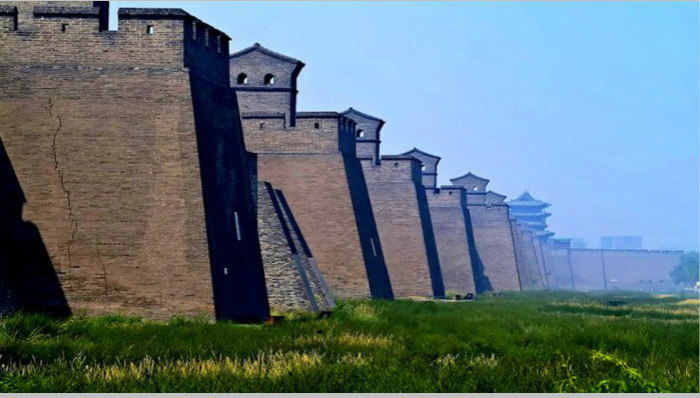Ancient Citadel of Binh Dao - China
Unesco's Scientific, Educational and Cultural Organization has recognized the Ancient Citadel of Ping Dao as a World Cultural Heritage in 1997.
Binh Dao ancient citadel - World cultural heritage in China
The ancient Citadel of Pingyao is located in Shanxi province in northern China, the most preserved ancient citadel in China. This is a perfect picture reflecting the cultural, social, economic and religious development in Chinese history.
Binh Dao ancient citadel began to be built around the 9th century BC, the whole city was 2.25 km2 wide. The main architectures and current layout found in the citadel were built more than 600 years ago. The architecture such as city walls, streets, shops, pagodas . are all basically intact, showing the traditional cultural ideology of the Chinese nation for several thousand years.

Binh Dao ancient citadel began to be built around the 9th century BC, the whole city was 2.25 km2 wide. The main architectures and current layout found in the citadel were built more than 600 years ago .
It also retains many artifacts and architectural art of the Ming and Qing dynasties (1368-1911). Binh Dao ancient citadel was first built about 2800 years ago, at that time only and the walls of earth were erected very carefully. Until 1370, the earth wall structure was repaired with bricks and was constantly reinforced until today. The length of the walls is more than 6000 meters long and 12 meters high. The outer appearance of the ancient wall looks like a tortoise-shaped, with six gates. The north, south, east and west sides have one door. The western gate is the tail of tortoise, this is also the lowest place of the ancient citadel, all the standing water of the city flows from here, making the ancient Citadel of Binh Dao very solid, deeply implying forever. In the city, the architecture is arranged in a closed direction, taking the North-South direction as the middle axis, the small lanes are intersected, the city's layout is very neat with clear functions.

All housing structures of the ancient city of Binh dao are all four-storey buildings built with ash-colored bricks with clear axes, symmetrical right and left side. Outside of each closed campus, the wall is seven to eight meters high. The speciality of the houses in the ancient Citadel of Binh Dao still retains the cave style of the Northwestern region of China with the architecture of wood carving, brick carving on windows and doors. More than four thousand houses in the ancient city of Binh Dao exist until today, mostly built under the Ming and Qing dynasties, of which more than 400 houses are relatively well preserved. This is also an ancient cluster of houses preserved most intact in the Han ethnic area today.

In the ancient citadel of Binh Dao there are also six temples with a long history, the area around the temple has rows of shops with yellow and green glass roofs. These ancient architectures have portrayed the bustling face of the Chinese trading industry under the Ming and Qing dynasties. Besides, Binh Dao also retains many ancient relics and artifacts such as Van Buddha electricity, Chan Quoc pagoda in the northeast of the ancient citadel. These two temples were built with precious wood, so far more than 1000 years old. The colored statues of the temple were made in the 10th century, which is one of the earliest colored statues made in China. In addition, there are more than 1000 ancient carved steles located throughout and outside the city of Binh Dao.

In the development of Chinese currency history, the ancient Citadel of Ping Dao has a special place. In 1824, Binh Dao appeared the first primitive bank of China called Nhat Thang Xuong , taking the form of draft to change the traditional cash payment regime. 'Nhat Thang Xuong' not only expanded throughout the country but also developed to neighboring countries such as Japan, Singapore, Russia . Under the lure of ' Nhat Thang Xuong ' bank, the banking industry developed fast. In the most prosperous period in Binh Dao, there were 22 such banks accounting for half of the total number of Chinese banks at that time and it became China's currency center. The Western road in Binh Dao ancient citadel is now a bank of streets more than a hundred years ago. On the West Road today, the store is still in store, the shopping scene is very busy. In the middle of these stores, 'Nhat Thang Xuong ' bank is a very modern image. The bank's appearance is not high and outstanding but it is still a very fresh image of the area.

Until today, the ancient city of Binh Dao is still full of life. A row of city walls prevented Binh Dao district from becoming two different worlds: inside and outside the city. The streets, shops and houses inside the walls still retain the old architecture of 600 years ago. Outside the walls, it is considered a ' new city ' with a number of newly changed structures to keep up with modern development.










- Discovered the ancient citadel from the 4th century in Quang Nam
- Graveyard for children more than 2,000 years in ancient China
- China discovered ancient citadel for 2000 years
- Discover an ancient citadel in Bangladesh
- Lijiang town
- China discovered the ancient citadel of the Tang Dynasty built by Cao Bien
- Egypt discovered an ancient citadel of 3,500 years
- Discover new archeology under Co Loa citadel
- Admire the world's oldest citadel
- Citadel and tomb Cao Cu Ly - Cultural heritage of China
- Acre ancient citadel - World cultural heritage in Israel
- The pyramid pyramid is located between the ancient Chinese city
 Suzhou classic bonsai garden - China
Suzhou classic bonsai garden - China Chau Nguyen Dynasty
Chau Nguyen Dynasty Thai Son Mountain - World Wonder
Thai Son Mountain - World Wonder Ancient villages of Shirakawa-go and Gokayama
Ancient villages of Shirakawa-go and Gokayama After 1,800 years, ghosts from ancient Mayan cities are still enough to harm people
After 1,800 years, ghosts from ancient Mayan cities are still enough to harm people  How advanced were prehistoric civilizations?
How advanced were prehistoric civilizations?  The mystery of the 4,000-year-old nuclear explosion at India's 'hill of death'!
The mystery of the 4,000-year-old nuclear explosion at India's 'hill of death'!  Why do archaeologists absolutely not touch two 'colorful' things in ancient tombs?
Why do archaeologists absolutely not touch two 'colorful' things in ancient tombs?  What is the difference between Western eunuchs and Chinese eunuchs?
What is the difference between Western eunuchs and Chinese eunuchs?  Scientists use scanners to study Egyptian mummies and solve 3,000-year-old mystery!
Scientists use scanners to study Egyptian mummies and solve 3,000-year-old mystery! 